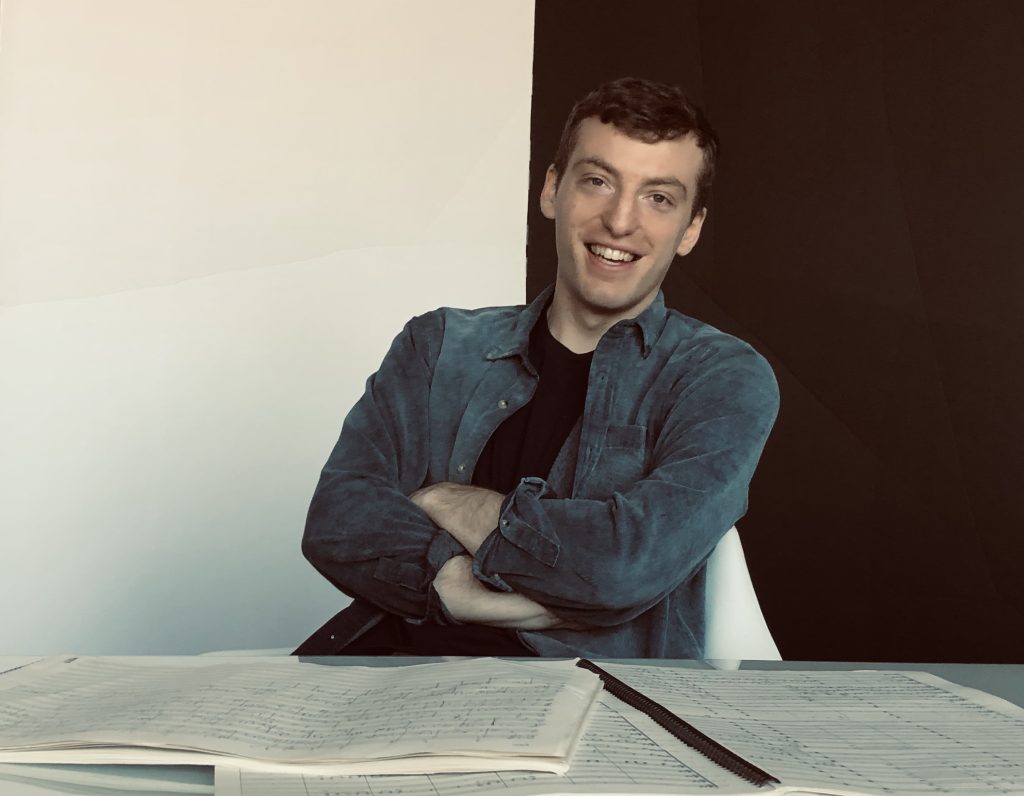
by Kevin T McEneaney
Friday night’s concert at St. Andrews Church in Kent opened with a composition by Chris Rogerson (b. 1988), A Fish Will Rise for flute, clarinet, and piano. Rogerson teaches at the Curtis Musical Institute in Philadelphia. He works with in a variety of musical genres with voice artists, symphonies, and quartets. As a young man he was the bassist for the punk band Circle Jerks. More recently, he has just completed a composition for Yo-Yo Ma. A Fish will Rise (2016) features remarkable harmonic interplay with the three instruments, yet at the beginning the instruments are not on the same page—they struggle to grow closer and eventually find harmonic agreement at the close, so it is like three strangers with very different priorities who don’t understand each other but who attempt to understand each and eventually after trying out concepts or practices that don’t work, discover agreeable solution. While this allegory of musical correctness offers wit and perhaps some tendentious political correctness, it might be better understood to be like the process of solving a difficult a difficult jig-saw puzzle. At first the flute, superbly played by Susan Rotholz, shrilly asserts dissonant dominance, then the piano, liquidly performed by Margaret Kampmeier, confidently claims assured dominance, and then the clarinet, blown with subtlety by Alan Kay, makes a desperate, modest attempt to communicate with flute and piano. Eventually, beyond confusion, the harmonic resolution at the Finale offers copacetic relief and catharsis when all the instruments happily coordinate with the motif of “Why can’t we all get along?”

Five Pieces for flute, violin, and piano by Dmitri Shostakovitch, a selection of five musical pieces from various compositions, offers cultural musical critique. The Prelude, dominated by lyrical flute and agreeably supported by piano and flute set a French lyrical standard of politeness for all to follow. The Celtic Gavotte, a circle dance where everyone swings each other’s hands in a round, is simple, primitive, and satisfactory. Elegy mourns the loss of cultural folk customs and dance around the globe. Waltz addresses elegance in the upper class. Here that movement with Doori Na on violin was ravishing sweet, yet I have heard this played with a violin that grows more strident and at midpoint becomes dissonant, then out of tune to create comic amusing satire on German culture. Polka is then the satisfactory reversal, the Slavic dance that transcends other forms of dance as it combines exuberance, humor, and fellowship.

Fantasy Trio for clarinet, cello, and piano, Op. 26 (1969) by Robert Muczynski, a Chicago-born Polish-American composer, most notable for his compositions for piano, flute, and saxophone, noted for his modestly clean dynamics with lively, subtle shading. The opening Allegro was buoyant and energetic, especially for piano and cello with modest support from Alan Kay’s clarinet. The cello leads in the Andante which gave an opportunity for Eliot Bailen to shine and then pass the lead to piano and then clarinet. The next Allegro sports a conversation between all instruments. While this music was Romantically classical, there were some unusual jazz riffs that updated the piece. After the modest agreement of the third movement, the Finale was robustly ecstatic, especially the piano which melded jazz with classical style that appeared to me to intone a certain nostalgia for cool jazz, and then ran pell-mell into an apocalyptic future where the train of music falls off a cliff into a climatic, enigmatic abyss. The last movement was so shocking that I wished to hear it again.

Techno Parade for flute, clarinet, and piano by Guillaume Connesson (b. 1970) presented an ironic satire on electronic music, providing a virtuoso showcase for Susan Rotholz on flute and secondarily Alan Kay on clarinet. While the piano is stuck without a downbeat and at midway is played with sheets of paper over the keys, the 7/4 rhythm sounds like the apex of insanity as it freights the continuous, energetic, rushing pulse that techno prizes, here ambiguously festive or ridiculing, depending on how you interpret it amid its hypnotic, trance-like appeal. Mercifully, the piece is short.
The first half concluded with Promenade, Walking the Dog by George Gershwin from the soundtrack of the film Shall We Dance (1937). It’s the comic scene where Fred Astaire walks the mut on an ocean liner. This genial and charming piece sounds better without the visuals because of its marvelous orchestration. Peter Weitzner on double bass was the ship all players sailed on as in the next piece.
The second half offered Quintet for Piano and Strings in A Major, Op. 114, D. 667 (1819) by Franz Schubert, nicknamed “Trout,” written when Franz was twenty-two, a posthumous smash hit because it was only published the year after his early death. Noted for its interweaving, repetitive, lyrical motifs, it is a showcase for violin; Doori Na did not disappoint as he held forth with sublime grace amid vigorous, sweet, mediant tonalities, vagrant chromaticism, and his effortless execution in highest registers! On viola Sarah Adams was delicate and superb….
This was a concert that combined both old and new, offering a large palate of styles and virtuoso performances that explored many musical styles with charm and dedication.
